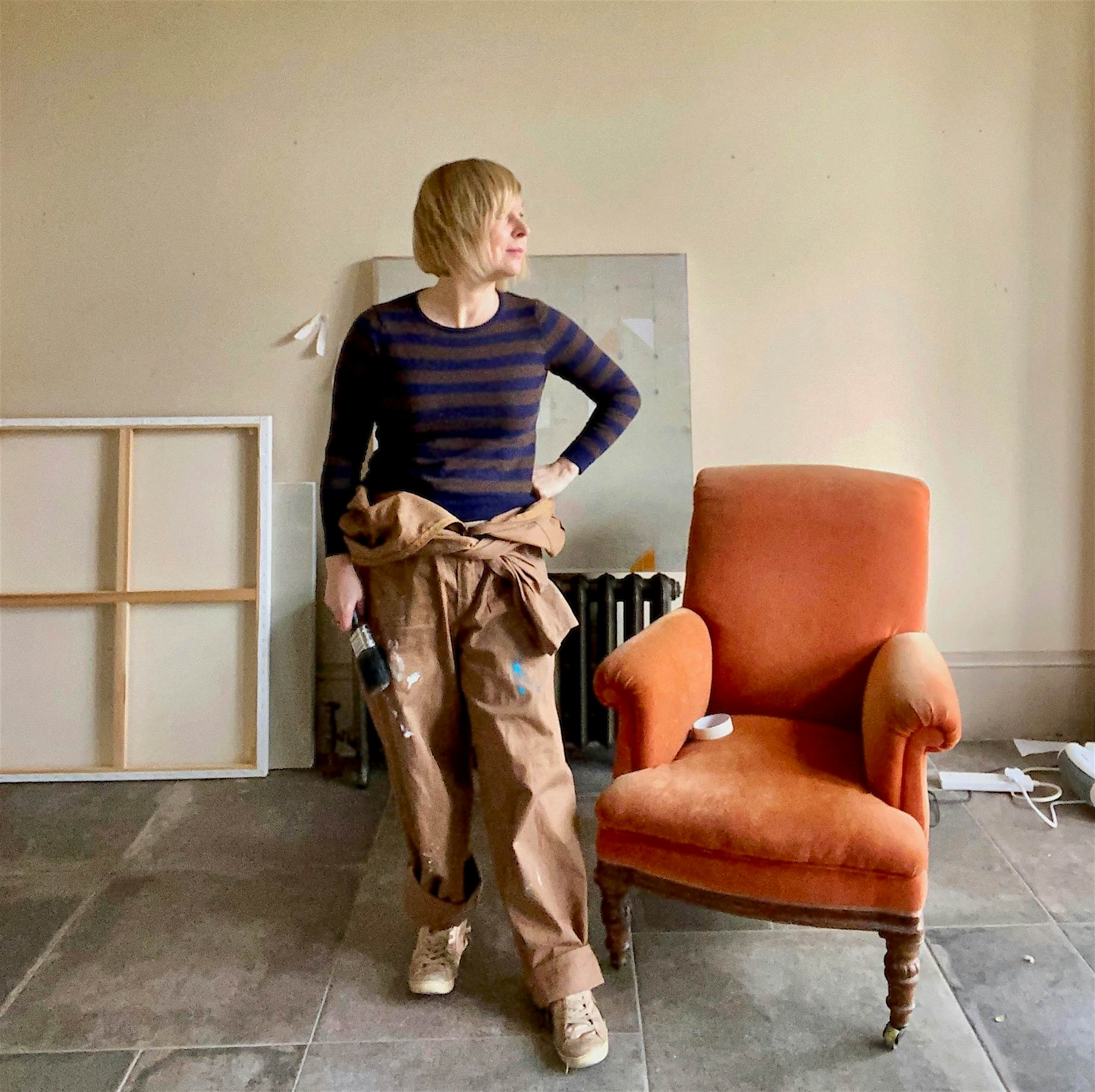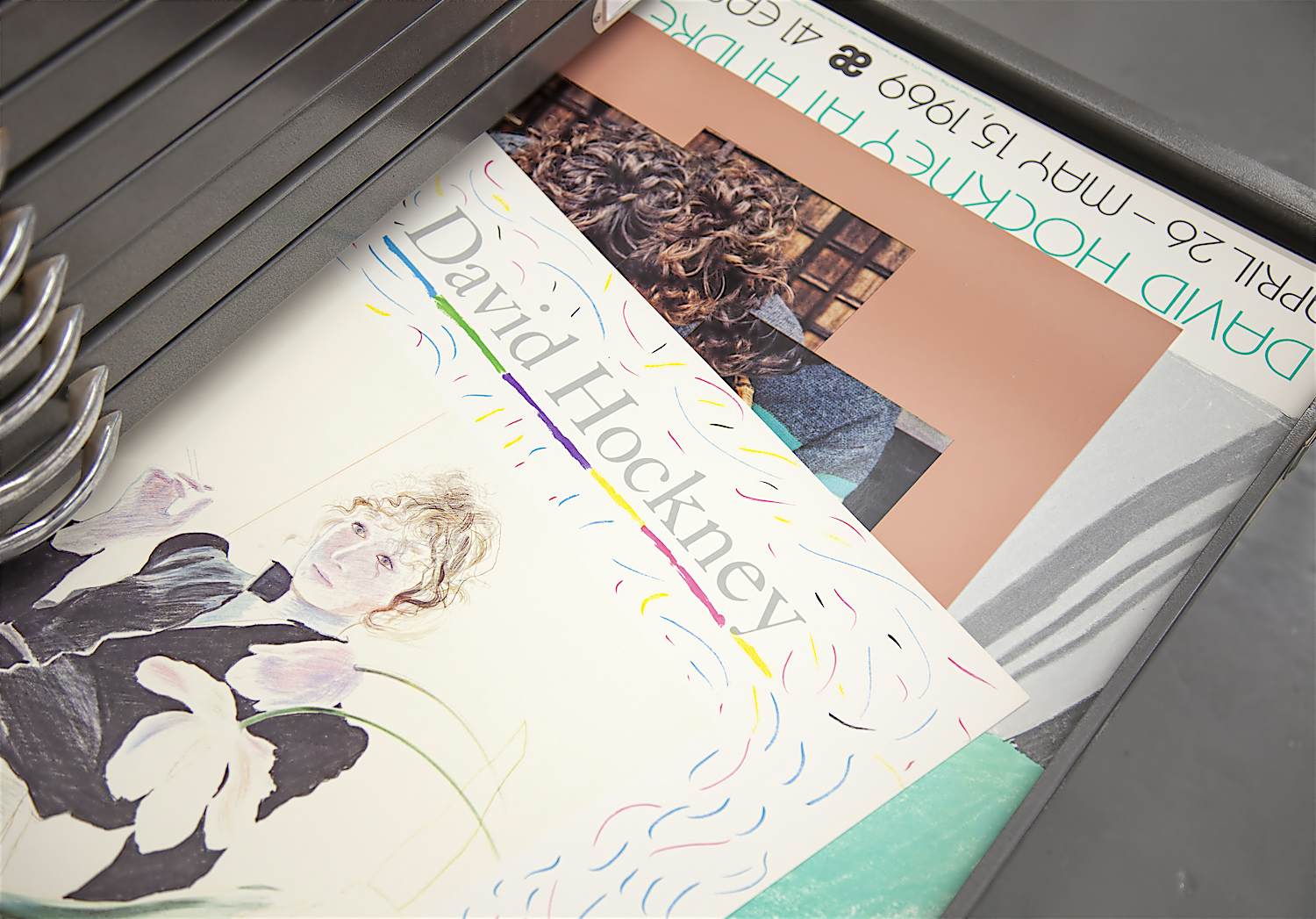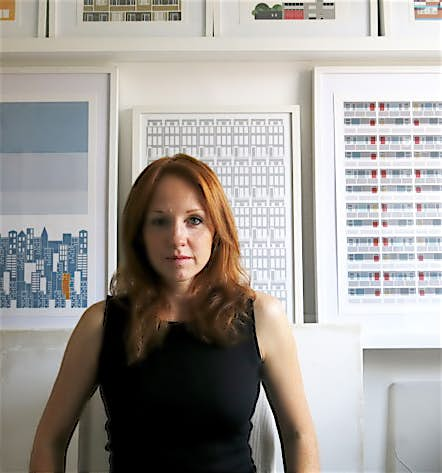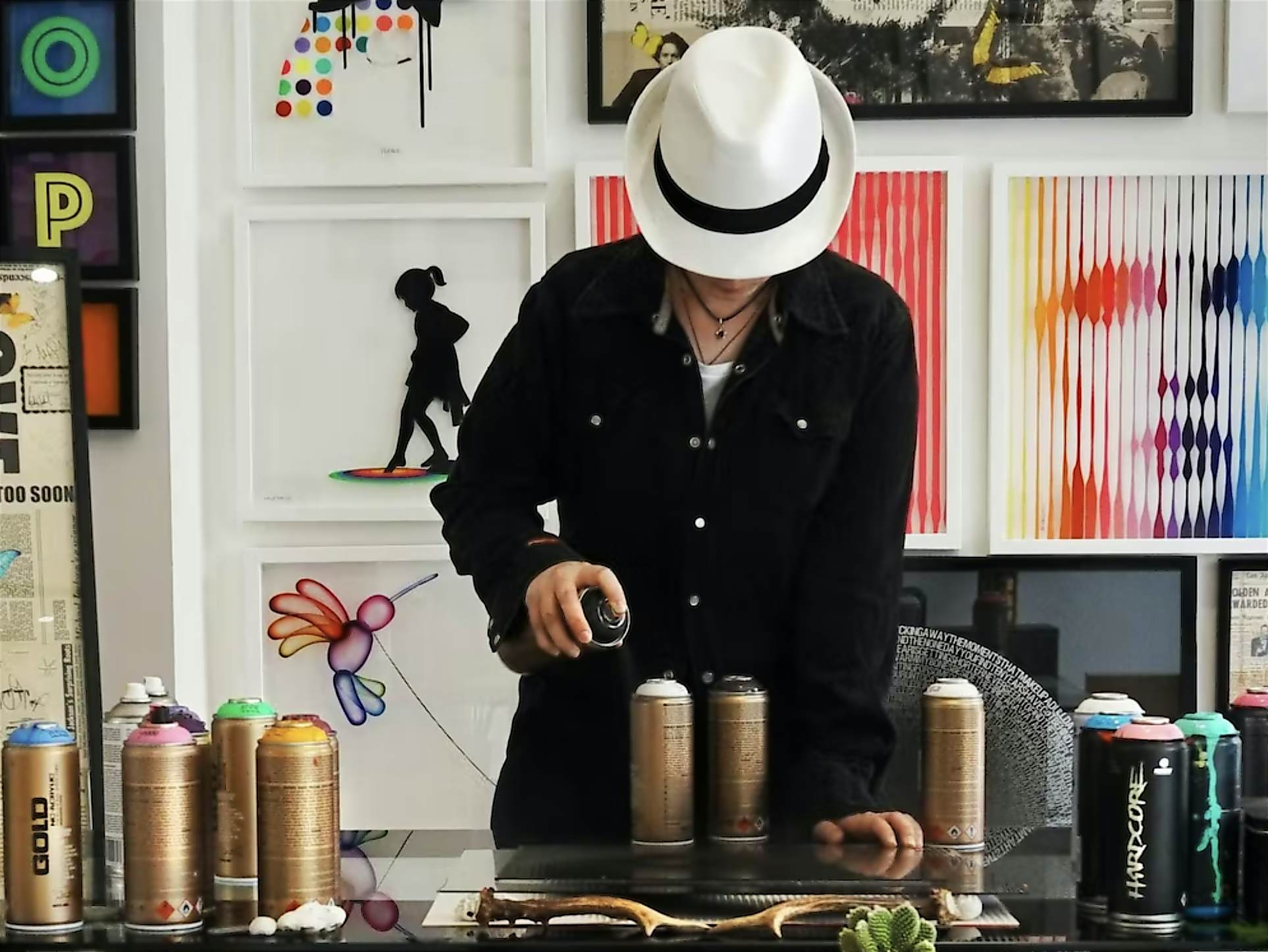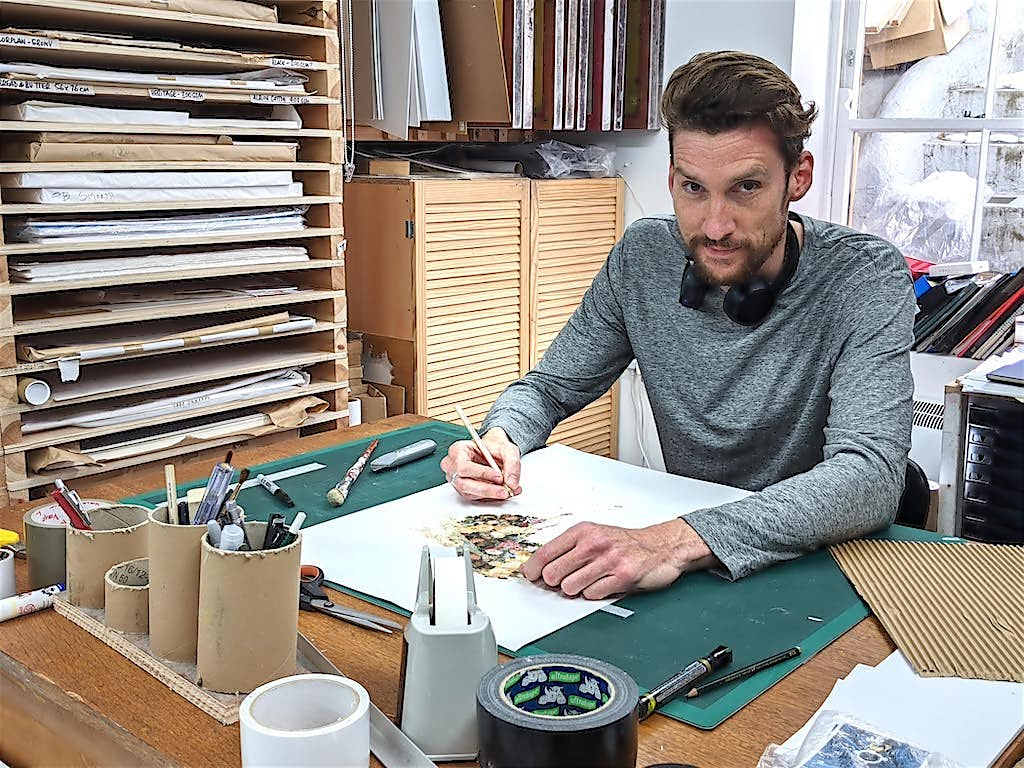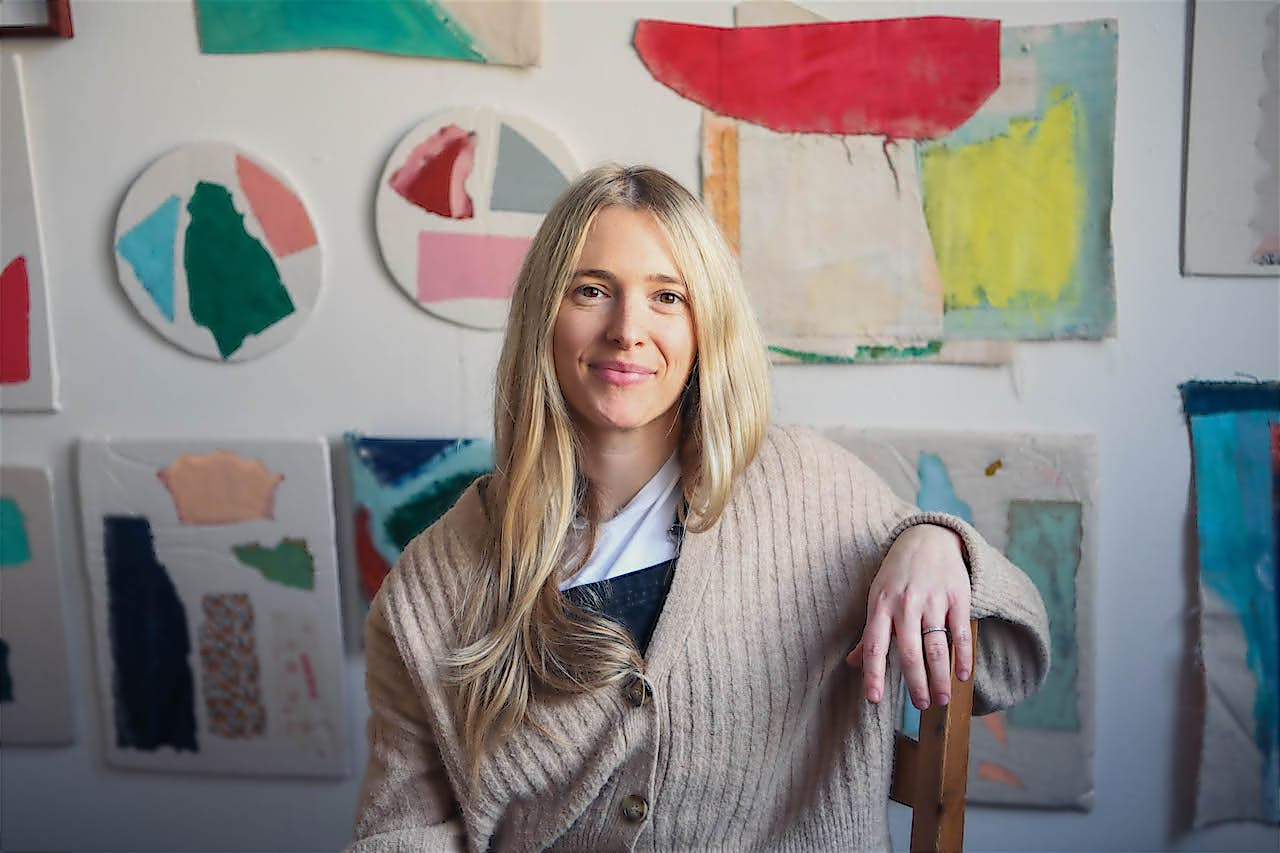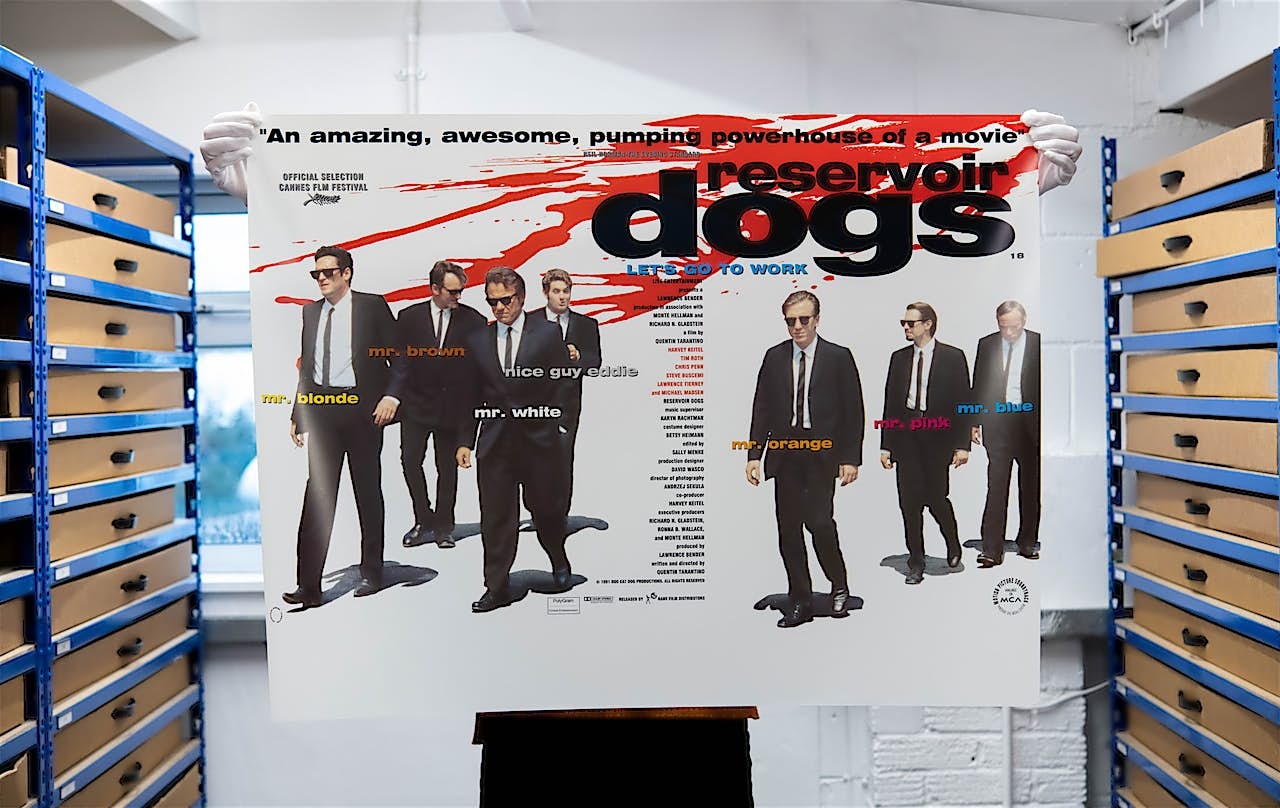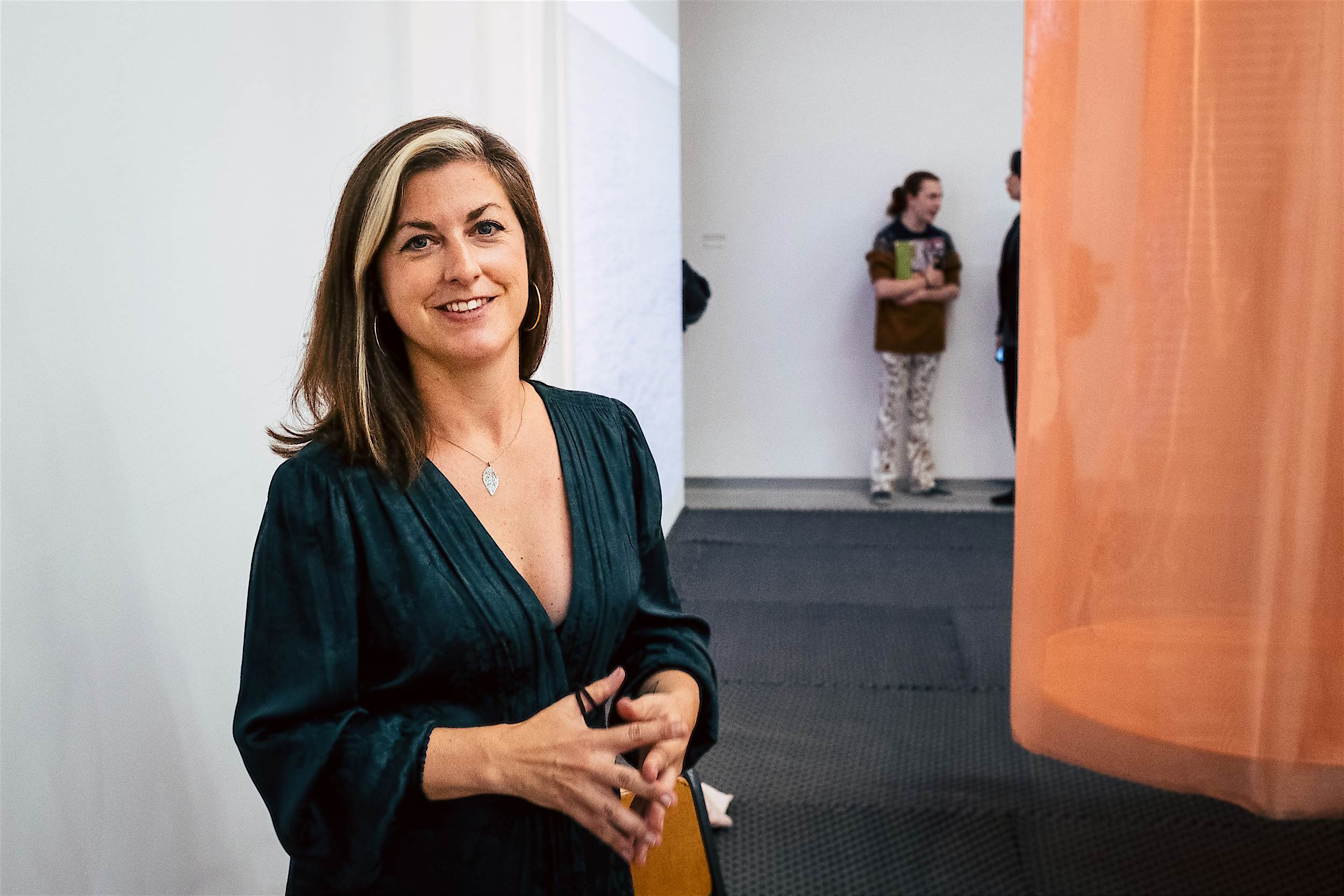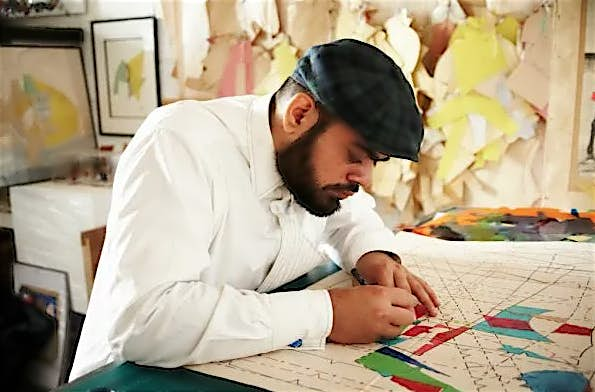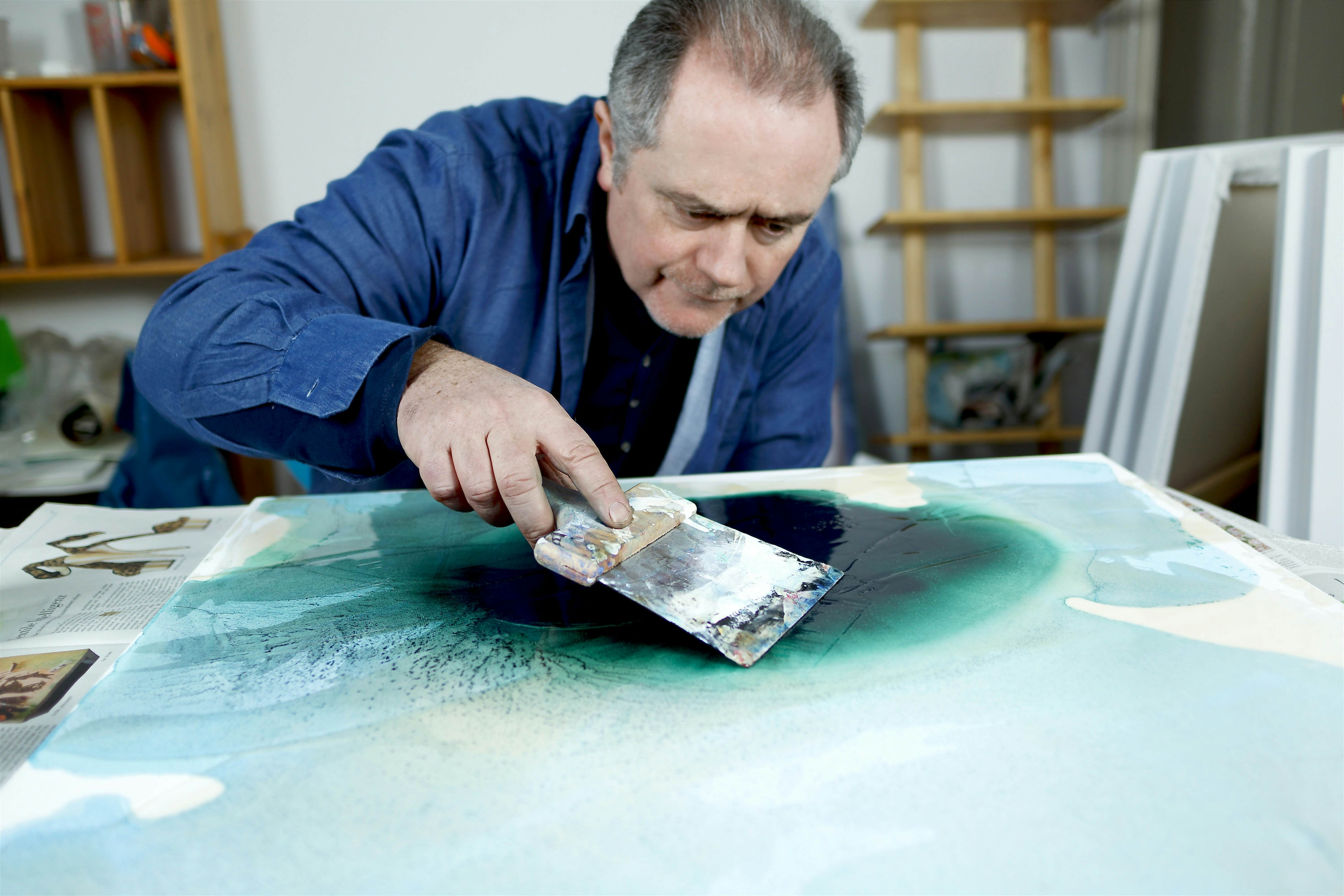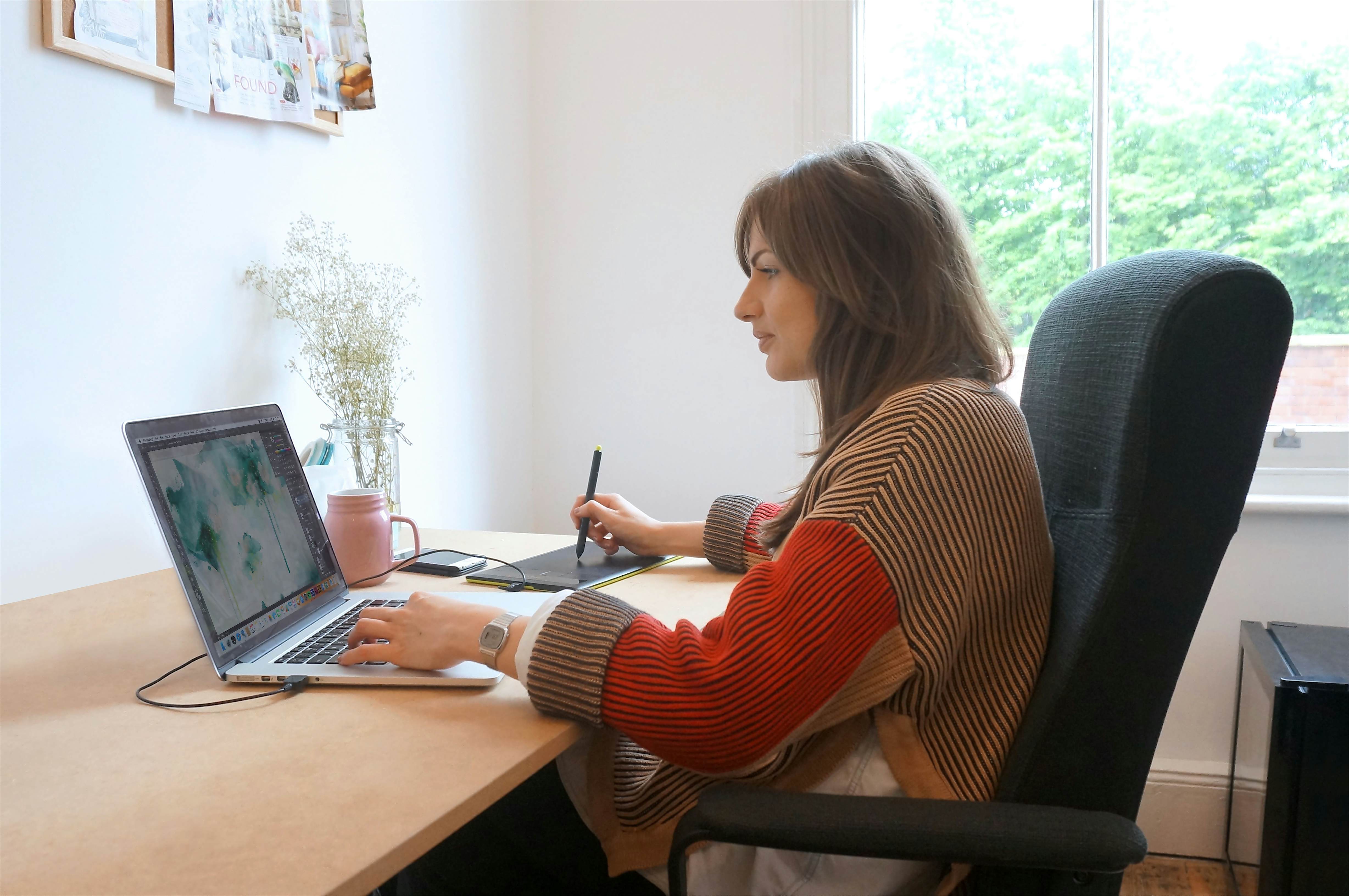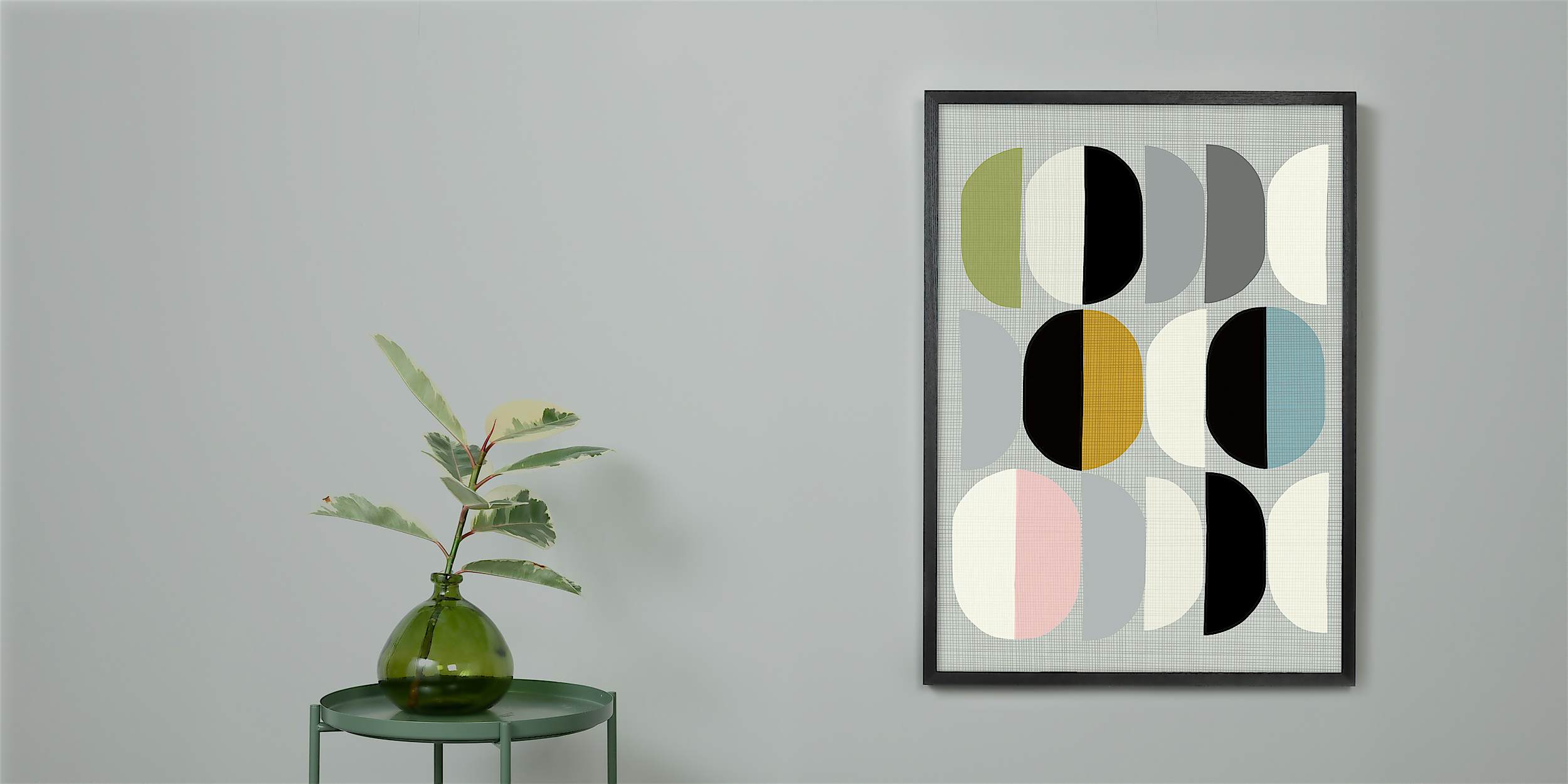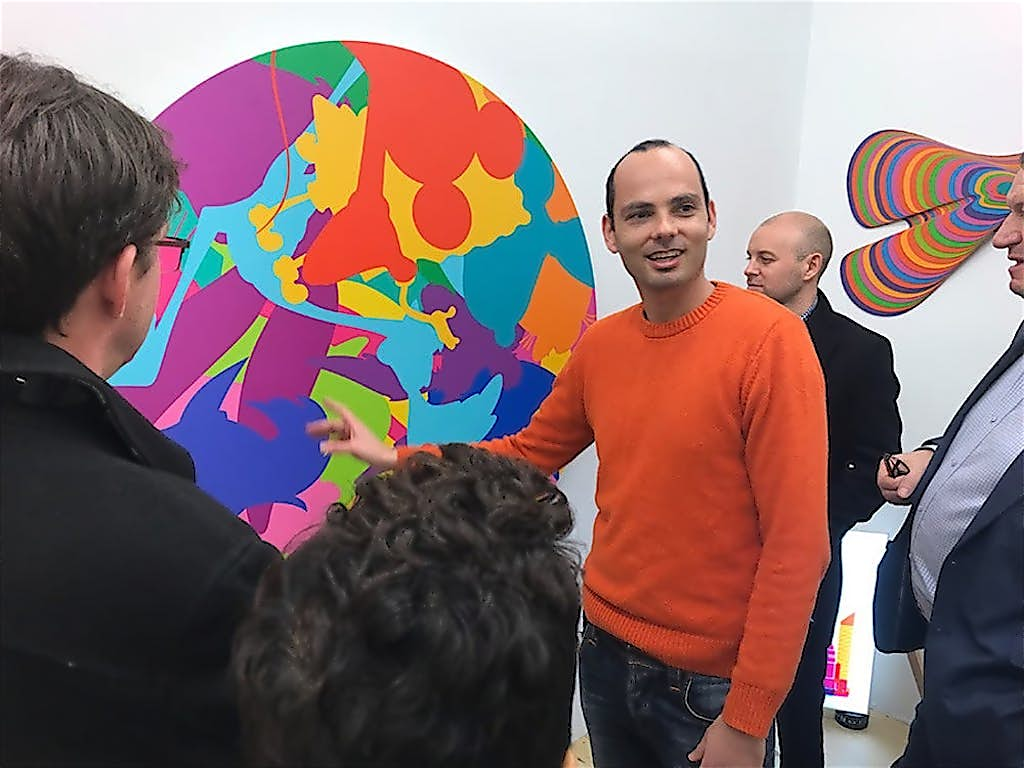Julia Trigg’s graphic work inspired by vintage ephemera
Reading time: 5 mins
Brighton-based artist Julia Trigg collects vintage ephemera – from old transport tickets and stamps to sheet music covers and antique etchings – and uses it to create richly coloured collages. Unable to bear cutting up the original materials, Julia scans them instead, capturing all the original qualities and imperfections in fascinating detail. We step into Julia’s world and dig beneath the layers of these fantastic textures, colours and intriguing snippets of text and image.

Q: Have you always been creative since childhood, or did you discover your talent later?
A: Yes, always drawing and making things. When I was a very young child, my mum worked for a toymaker – Miss Cranfield, who was taught by Henry Moore.
Her workshop was in the attic of her huge Victorian house in Wimbledon, full of antiques and oil paintings, straight out of a Dickens novel.
I’d be given scraps of fabric, fur, a needle and thread and she taught me how to sew. I would make little animals while my mum worked.
Q: Where did you grow up?
A: At age 9 we moved to Hampshire, near Portsmouth. I don’t think the coast influenced my work, but it showed me there was a whole new world to explore outside of London.
Q: Did you go to art college?
A: I did a foundation course at Portsmouth Art College, age 16. This was a revelation to me, to be taught painting, ceramics, 3D design, photography and graphics. I went on to study a graphic design degree at Brighton and a Masters at the Royal College of Art in London.
I remember clearly Harold Cohen teaching us composition at Brighton, it was the first time I’d tried collage and I was excited with the results. The degree course taught me to ‘think outside the box’ and communicating an idea was key.
There were no digital cameras or computers back then. A key moment in art history lectures was learning about the Bauhaus. A trip to see the Robert Opie Museum of vintage packaging was inspirational.
Margaret Calvert ran the Masters course, I remember lecturers Bobby Gill and Philip Thompson telling me I should be on the illustration course!

Q: Have you ever done any other jobs before you became a full time artist?
A: I was a graphic designer for 25 years and enjoyed working in corporate identity best. But I’ve always done my own illustration work alongside, and for a while had a greetings card business.
I started making my ephemera prints in 2008, exhibiting them at the Artists Open House festival in Brighton, and have gradually become a full-time artist. I haven’t done a graphic design project for around 5 years, as it became too stressful.

Q: ‘If I wasn't an artist I'd be...’
A: I like the idea of travelling around Europe in a campervan and collecting vintage graphics and running a junk shop. Teaching kids art would be rewarding I think. Or a musician, but I don’t have the talent for it!
Family commitments mean it can be a juggling act, but generally, I work until about 5 or 6 pm. If I have a deadline or am feeling inspired I work in the evening sometimes.
Q: When is your most productive time of day?
A: Colour matching has to be done in good daylight. Creative ideas often come late at night when it’s totally peaceful. One idea leads to another, I get inspired and just have to sketch it, or try it out on the computer. Then I work the ideas up the next day.
Q: Where do you work – studio or home? Do you have a room with a view?
A: I work in the attic, with views across Brighton and the South Downs.

Q: Do you have music/radio or silence?
A: It depends on what I’m doing. I find it distracting when I’m thinking/creating, but other times I either put on a Spotify playlist, or the radio.
Q: What materials or tools do you use?
A: Vintage ephemera, iMac (Photoshop plus InDesign for quick layouts), Wacom tablet & pen, scanner, Epson giclée printer & cotton rag paper, paints, inks, pencils, brushes, paper for sketching and making endless lists.
Q: What are the main themes to your work?
A: They say one person’s junk is another person’s treasure… To create something new and inspiring from old discarded ephemera, I find exciting.
I am drawn to vintage typography and graphic illustrative devices, with authentic, worn, imperfect textures. I love colour and experimenting with colour combinations.
Playing with positive and negative spaces and the contrast between delicate or intricate designs and bolder graphic shapes. Cropping and juxtaposing, creating abstract details to form contemporary compositions.
Q: Do you draw on personal experiences?
A: I make designs that please me, influenced by my graphic design background.
Q: Do you have a current/past favourite piece of your work?
A: A cliché, but I get most excited about the next piece of work I’m doing.
Q: What other artists inspire you? Who are your art heroes?
A: Kurt Schwitters, Ben Nicholson, Sir Peter Blake, Eduardo Paolozzi, Rosalie Gascoigne, Rex Ray, Paul Klee, Barbara Hepworth and graphic designers Saul Bass, Herbert Leupin and Sister Corita Kent to name a few.
Q: Are there any contemporary artists whose work you follow?
A: William LaChance, Martin O’Neill, Holly Chastain, Sue Williams-A’Court, Jessica Ford, Louise Fili (typography) and many more.
Q: What art do you hang on your walls at home?
A: I have some of mine hanging up, as it saves storing it! Also for example, vintage shop letters, a bus destination blind, a typesetters tray full of shells, pop art prints, old American number plates, a box frame sculpture by Paula Dyer…
Q: What was the last art exhibition you went to see?
A: Sister Corita Kent at Ditchling Museum.
Q: Where do you see yourself in 5 years' time?
A: I’m grateful to have a career doing what I love, so hopefully I’ll still be doing it. A tidy house, established garden and better work-life balance would be great too!
Q: Any key ambitions or goals you still have on your to do list?
A: I would like to work on a series of original 'one-off' collages, exhibiting them would be fab. I’d also like to paint, or include some painting in my work.
Q: What have been some highlights or achievements you're proud of?
A: My solo exhibition at Castor & Pollux in Brighton. Meeting and chatting to customers who love my prints. Having work chosen for international commercial publications. Having an exclusive range published by King & McGaw.
Q: What are the challenges in being an artist now?
A: Finding your audience. Finding your voice. Covid has meant some projects have been cancelled, but I’m lucky I can connect with customers online.
Q: How would you describe the life of an artist?
A: Obsessive. More ideas than time.
Q: What advice would you give to younger artists just starting out?
A: Rosalie Gasgoine had her first exhibition age 57, so there’s always time and hope. Practice your skills, experiment, talk to other artists, create art you are passionate about. To evaluate work, I find it helps to leave it a couple of days and then go back to it. “Inspiration exists, but it has to find you working” – Picasso.
Q: Best piece of advice you've ever been given and by whom?
A: In hindsight, I think it was David Anstis (my best friend’s dad), who told me to do an art degree. At age 17, I didn’t realize it was something I could achieve. And my mum, always encouraging, who tells me often ‘don’t worry so much’.










